Licence To Kill
|
||
|
||
Licence To Kill
|
||
|
||
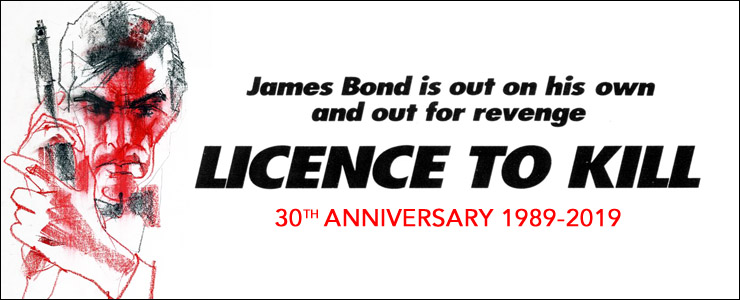 |
|
The Big Gamble |
|
Following the huge international success of Timothy Dalton's debut as James Bond in The Living Daylights (1987), the actor wanted to make the films much more realistic and believable, and move away from the comedic approach of the Roger Moore era. Although The Living Daylights wasn't specifically written for Timothy Dalton, he was able to inject much more of Ian Fleming's original interpretation of the character into his role, and consequently many of the more outlandish sequences present in the original script were toned down, or eliminated altogether. In November 1987 screenwriters Richard Maibaum and Michael G. Wilson came up with a treatment for the next film in the series which would be set in China, and incorporated elements of Ian Fleming's 1960 short story THE HILDEBRAND RARITY, which featured the character of Milton Krest, who becomes involved in drug smuggling and the theft of historic treasures. The main villain behind these activities was at this this stage called General Kwang (a character originally created for The Living Daylights), a warlord from the Golden Triangle. Location scouting visits were planned but the Chinese government proved less than enthusiastic and the producers looked elsewhere. By January 1988 it had been decided that Key West in Florida would prove to be a cheaper option, and with a newly proposed Caribbean setting the script was changed accordingly. General Kwang therefore became a South American drug lord named Franz Sanchez, and by early May 1988 a completed screenplay entitled ‘Licence Revoked’ was delivered. The character of Kwang still appeared in the final film, but this time as an undercover narcotics agent played by Cary-Hiroyuki Tagawa. |
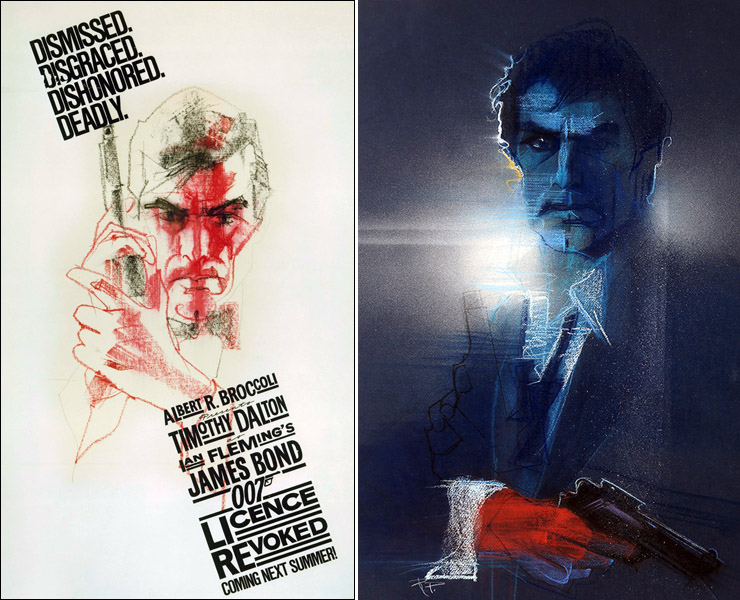 |
|
During the latter stages of the script development a strike by the Screen Writers Guild of America prevented Richard Maibaum from working on the project which was then largely developed and finished by Michael G. Wilson, who was employed on a foreign contract and not subject to the strike conditions which turned out to be the longest-running in the history of the Guild, lasting for five months from March to August 1988. Many other major films and TV series, including Tim Burton's re-interpretation of Batman (1989) were also affected by the strike, resulting in new non-Guild writers being brought on board to finish the script. ‘Licence Revoked’ now had a storyline ripped from the headlines with its protagonist based directly on General Manuel Noriega and his influence on the government of Panama. With a story and title now in place early poster concepts by Bob Peak were commissioned. Peak, who had painted the stylish artwork for 1977's The Spy Who Loved Me, now depicted Bond as a modern hero, with many of his designs moving away from the usual dinner jacket and bow-tie image familiar from almost every James Bond poster campaign since 1962. |
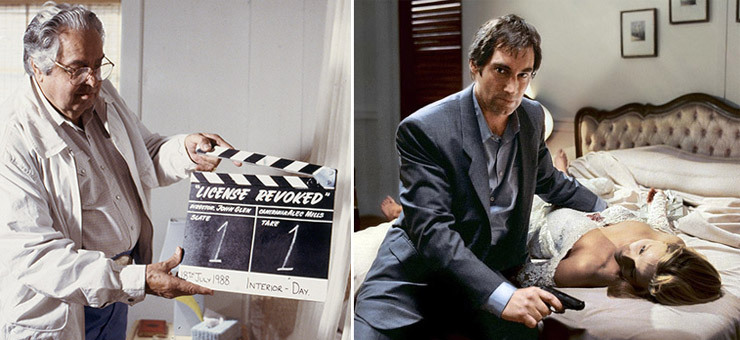 |
|
With a much smaller budget of $32-million (compared with the $40-million spent on The Living Daylights), the sixteenth film in the series became the first since Moonraker not to be based at Pinewood Studios due to the prohibitive costs of shooting in the UK following the abolition of the Eady Levy in 1985. The Eady Levy policy allowed half of the ticket price for a film to be retained by the exhibitors, and half was divided among qualifying ‘British’ films in proportion to UK box-office revenue. To qualify as a British film a minimum of 85% of the film had to be shot in the United Kingdom or the Commonwealth, and only three non-British individual salaries could be excluded from the costs of the film, thereby ensuring employment of British actors, technicians and film crew. ‘License Revoked’ was filmed at the Churubusco Studios in Mexico City and on locations in Mexico and Florida. Although Post-production and sound re-recording did take place at Pinewood Studios no part of the film was actually shot there, a first for the series. The first scenes shot at Churubusco Studios on July 18, 1988 were part of the pre-credit sequence involving Sanchez (Robert Davi) whipping Lupe (Talisa Soto) with a stingray tail, in a sequence taken directly from Ian Fleming's THE HILDEBRAND RARITY, although it is Milton Krest who performs the act of savagery in the short story. |
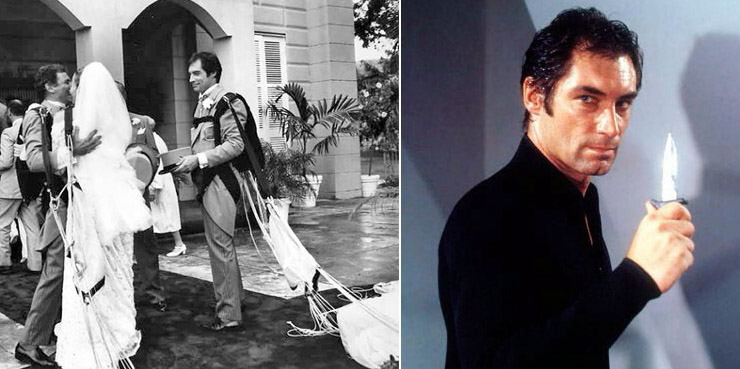 |
|
Timothy Dalton's first scenes were shot on the July 19th, including the scenes in Felix Leiter's house culminating with the murder of his friend's new wife, which sets up the revenge motif of the story. Over the next few days he completed sequences at Bond's hotel suite, followed by the first action scenes at the Barrelhead Bar involving Carey Lowell and newcomer Benicio Del Toro. Timothy Dalton insisted on doing as much of his own stunts as possible (as he had on The Living Daylights), with stuntman Simon Crane doubling him where it was needed. Filming then moved to Key West in Florida where the ending of the pre-credit sequence was filmed with Bond and Leiter landing by parachute outside St. Mary's Catholic Church on Windsor Lane. Second Unit work was done in parallel to the main filming, with Arthur Wooster shooting the action elements of Sanchez's capture by the US Coast Guard from 1 - 9 August, 1988. The Second Unit then moved to the border town of Mexicali to shoot the spectacular tanker chase, where they were joined by director John Glen from October 3rd to film scenes involving principal cast members. The tanker chase ultimately took 46 days to shoot in the unbearable heat of the Mexican desert that resulted in many accidents; some of which were incorporated into the final film, including the scene where one tanker crashed into the cliff face at the side of the road. The fiery demise of Franz Sanchez was filmed over three days from October 5th, with stunt co-ordinator Paul Weston doubling for Robert Davi. |
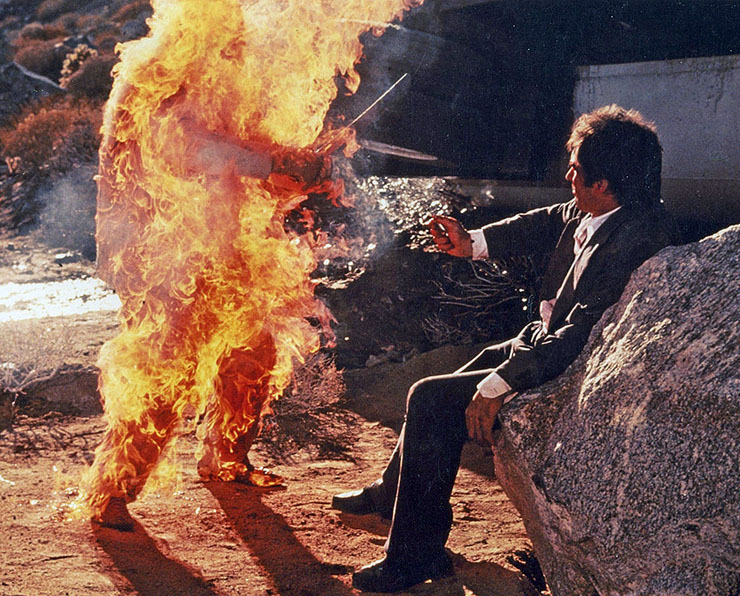 |
|
|